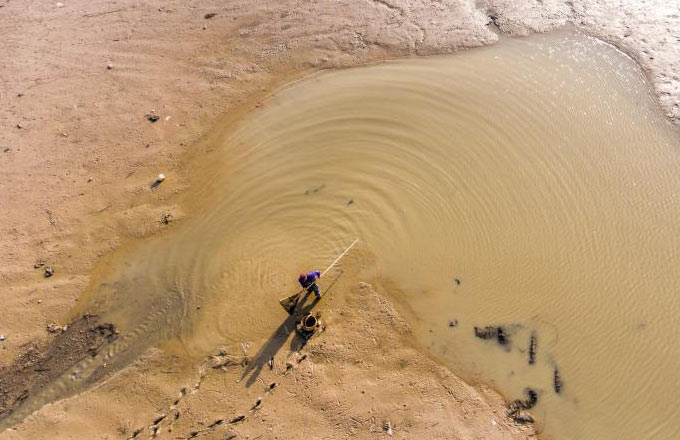Science vessel returns from Arctic
 |
|
Shi Xing'an, a member of China's eighth Arctic expedition team, waves to his son from the deck of icebreaker Xuelong at a port in Shanghai on Tuesday. The boy was welcoming him home after a 20,000-nautical-mile voyage over 83 days. [Gao Erqiang/China Daily] |
The Chinese icebreaker Xuelong, or Snow Dragon, docked in Shanghai on Tuesday after completing its eighth Arctic expedition, the Polar Research Institute of China announced.
The vessel traveled through the central and northwest shipping lanes along the Arctic rim for the first time, completing China's first circumnavigation of the top of the world.
The vessel departed from the exploration base in Shanghai on June 20 with 96 crew members. It traveled 20,000 nautical miles in 83 days, including 1,995 nautical miles through ice formations, according to the institute.
"The reason we tried the central line was that we could do research in the open ocean area," said He Jianfeng, vice-captain of the team and chief scientist of the expedition.
He added that China had traversed the northeastern shipping lane along Russia's northern coast in 2012, from the Bering Strait to northern Europe.
Seven survey stations were established on floating ice bodies during the journey for further scientific research.
"Because of the increasing rate of melting ice in the Arctic, it was quite difficult for us to find a proper station site," said He, adding that the floating ice this year was all less than 1.5 meters thick.
"We used to spend only about an hour finding proper ice, but this year it cost us almost a whole morning. The poor visibility due to heavy fog in the high-latitude ocean also made the journey tougher."
He said the sailing in the northwestern lane along the northern boundary of Canada helped fill in some blanks in oceanic research of the area.
"The research data we obtained this time provided important information for future commercial navigation," He said. "The northwest route is more complicated and narrower, and has more ice than the northeast shipping lane. Sometimes we had to navigate at night."
He said the team cooperated with Canada to study the marine environment and subsurface topography.
"Three Canadian scientists joined our survey. I think future cooperation between the two sides will take place in the future," he added.
"Usually Arctic expeditions are carried out once every two years. Starting this year, we plan to increase the frequency of expeditions," he said.
Xuelong 2, China's first domestically built polar research vessel and icebreaker, is scheduled to be completed in 2019, He said. The new vessel will be able to break through 1.5-meter-thick ice compared with only 1.1 meters for the older vessel.
Zhang Yi contributed to this story.




























